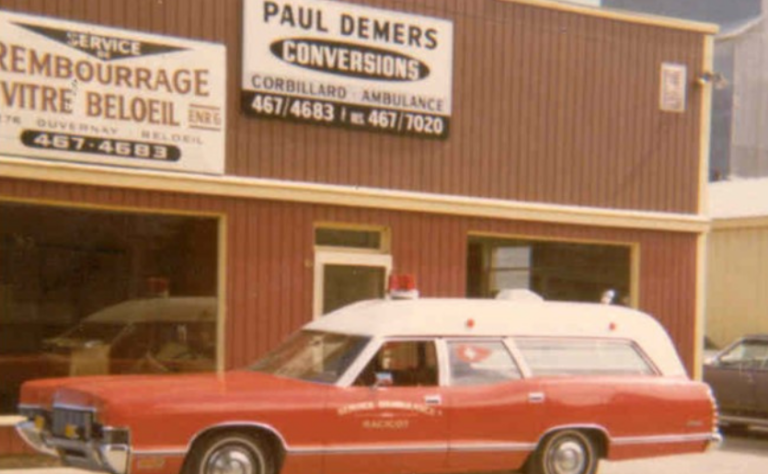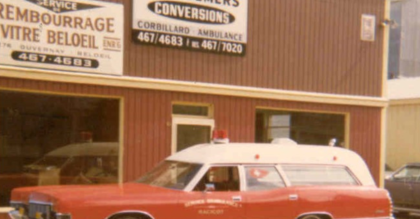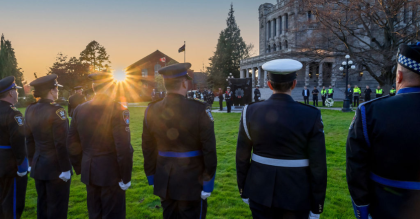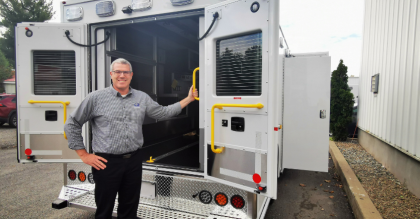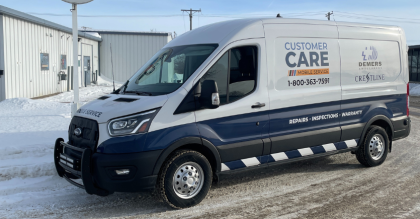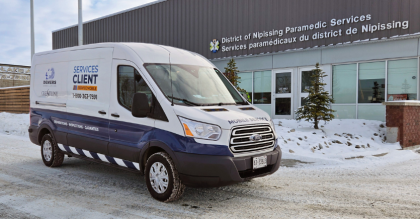In the heart of Beloeil, Quebec, a young Paul Demers stood in the garage behind his funeral home, tools in hand, staring at a used station wagon. The year was 1960, and Paul—an ambitious entrepreneur with a keen sense of opportunity—was about to reshape the future of emergency medical transport. What began as a family business in funeral services was about to become North America’s longest-established ambulance manufacturer.
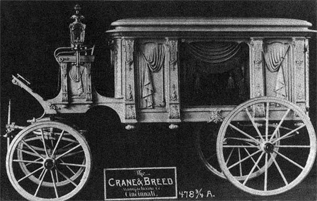
A Legacy Begins in the Funeral Business
The Demers family had long been known for their service to the community. Since 1889, they had built and operated a funeral business, manufacturing elegant horse-drawn hearses. Gustave Demers, the family patriarch, was a cabinetmaker by trade, but his entrepreneurial spirit led him to craft not only caskets but also the vehicles that carried them.
By the time Paul’s father, Maurice, took over in the 1930s, the industry was evolving. Cars were replacing horses, and funeral directors were beginning to see a new opportunity—ambulance services. But Maurice, deeply rooted in tradition, was hesitant to step beyond the family’s established business.
Paul Demers: A Visionary Ready to Break the Mold
Paul Demers had other ideas. He wasn’t content with simply following in his father’s footsteps—he wanted to build something bigger. After working in the family business throughout his youth, Paul saw firsthand the growing need for reliable emergency transportation. He was driven by a simple yet powerful realization: if he could build hearses, he could build ambulances.
In 1960, Paul officially launched Paul Demers & Fils, determined to expand beyond funeral services. However, his father did not support this bold move. Undeterred, Paul set up shop on Laurier Boulevard in Beloeil, competing directly with his father’s funeral home. Their rivalry became well-known in the town, but Paul’s gamble paid off—his ambulance service quickly gained traction.
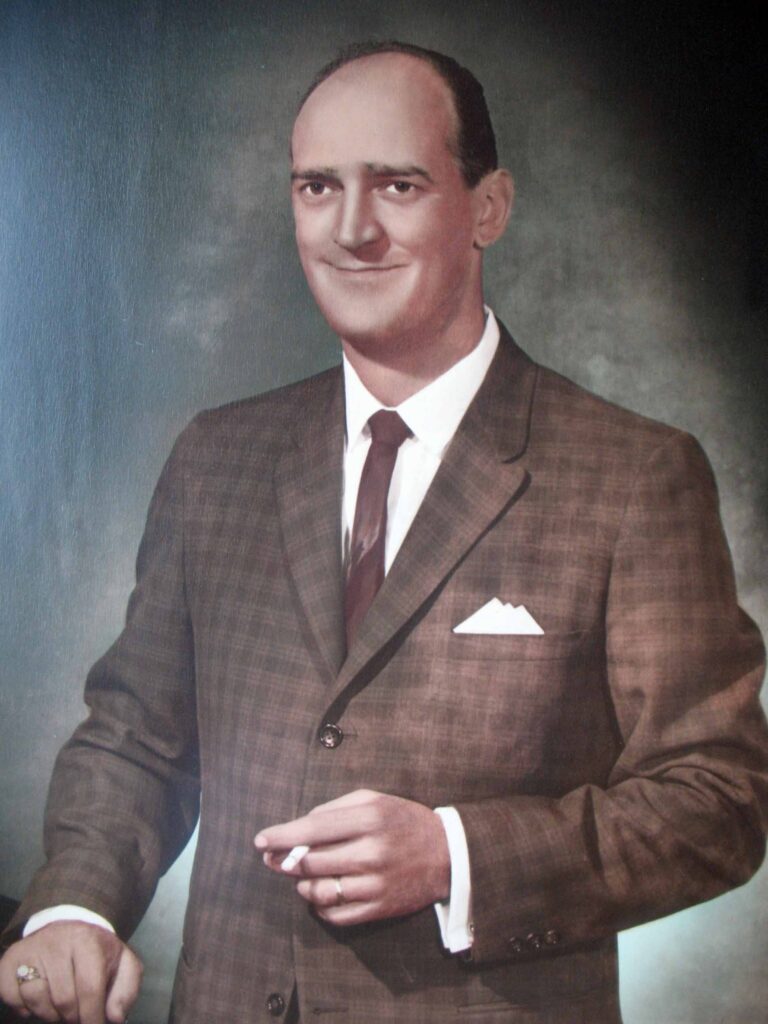
The First Demers Ambulance: Innovation Born from Necessity
With no major ambulance manufacturers in Quebec at the time, Paul knew he had to build his own. Using a station wagon as the base, he and a small team of local craftsmen cut the chassis, stretched the vehicle, raised the roof, and reinforced the structure with steel. This first Demers ambulance was not just a vehicle—it was a statement.
The town of Beloeil took notice. In a landmark agreement, the municipality contracted Paul’s service for $6,000 per year, ensuring ambulance coverage for its 6,000 residents. For each transport, the company received an additional $10 to $15—a modest start, but a critical foothold in the industry.
From Local Success to Industry Pioneer
Throughout the 1960s and 70s, Paul continued to refine his designs, introducing features that made his ambulances safer and more reliable. His passion for engineering and performance extended beyond business—Paul was also a competitive hydroplane racer, winning numerous trophies. The same daring spirit that fueled his racing victories drove his company’s relentless pursuit of excellence.
As demand grew, Demers moved to larger facilities, eventually settling on Richelieu Street, where the company still operates today. The 1970s saw significant advancements, including the introduction of the first Demers Type II ambulance built on a van chassis, offering improved maneuverability in urban environments.
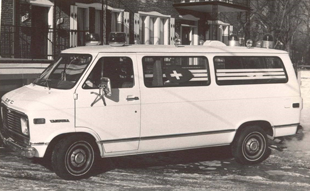
By the 1980s, Demers Ambulances was a name recognized across Canada, securing major contracts such as the City of Montreal’s emergency fleet and the landmark agreement with Ontario’s healthcare services. These milestones, along with expansion into international markets like Venezuela, Egypt, and the United States, positioned Demers as a leader in emergency vehicle manufacturing, setting the stage for further innovation and growth.
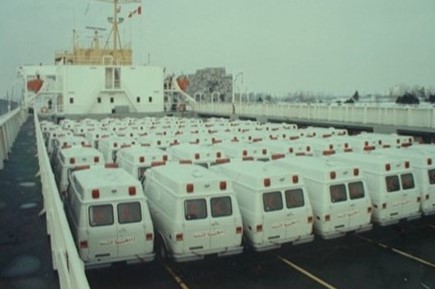
The Legacy Lives On: Better Together
Paul Demers built more than ambulances—he started a culture of resilience, innovation, and commitment to community. His vision laid the foundation for what would become a global leader in emergency vehicle manufacturing.
Today, as part of Demers-Braun-Crestline-Medix (DBCM), Demers continues to shape the industry, bringing together some of the strongest names in ambulance manufacturing. The Better Together concept has illustrated its importance in the last four years, allowing Demers and its sister brands to absorb economic downturns, keep their respective teams engaged, and provide life-saving vehicles to EMS despite all the global economic challenges endured.

The principles that guided Paul’s early days—innovation, quality, and an unrelenting drive to support emergency responders—still define Demers today. From crafting funeral coaches in a small workshop to becoming a global force in ambulance manufacturing, Demers’ journey has been one of relentless innovation, strategic expansion, and a steadfast commitment to quality. But one thing remains the same: Demers Ambulances is built for those who save lives, and it will continue to lead the way forward.

